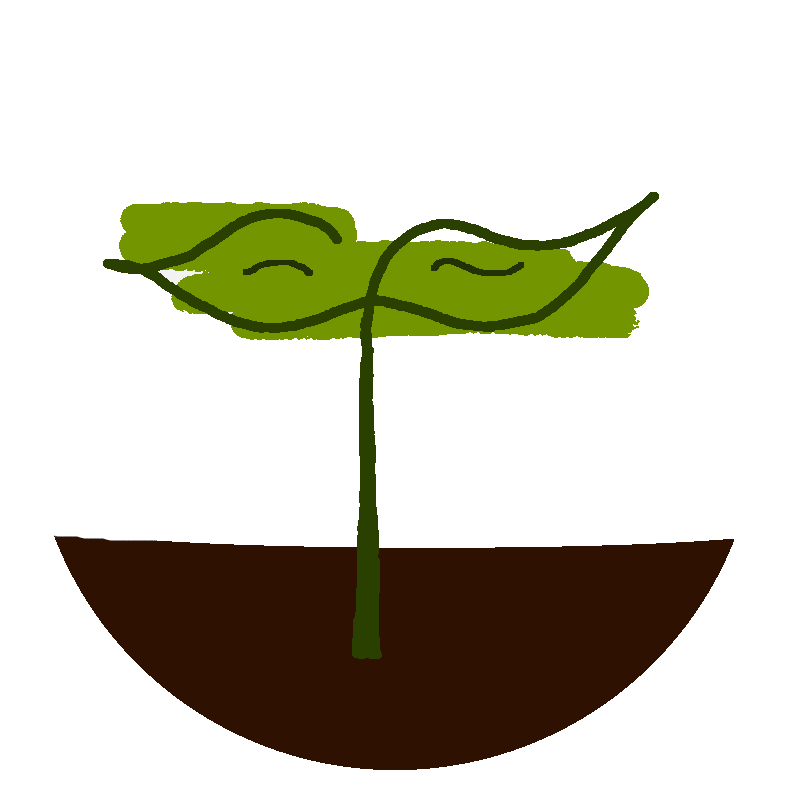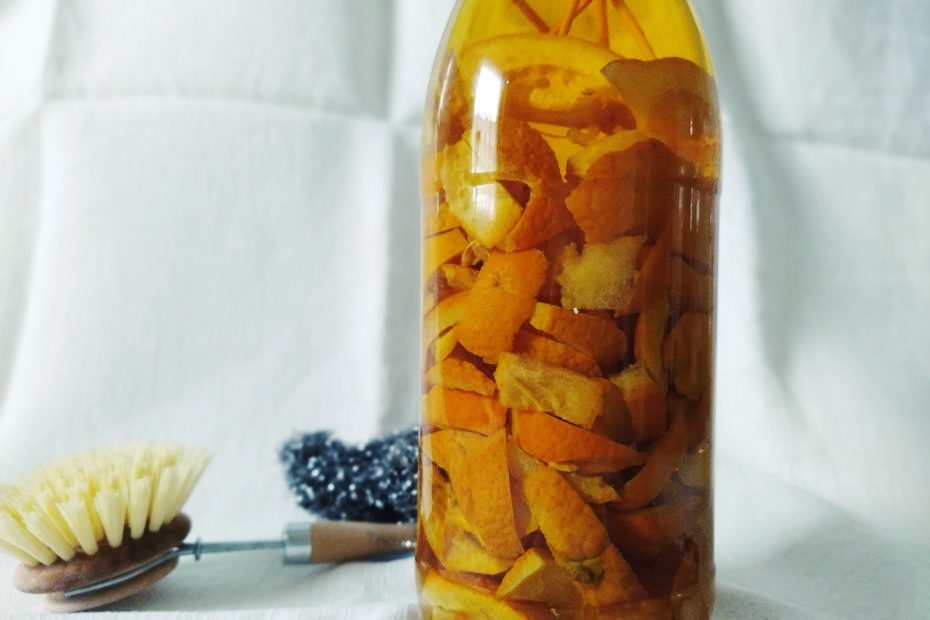Dozens of cleaning products contain harmful ingredients you may not even be aware of. They harm your health and pollute our water. Phosphonates, preservatives, fragrances, and dyes cannot be completely broken down. They harm water organisms and accumulate in the environment. But there’s a better way! You can conveniently make eco-friendly cleaning products yourself.
Introduction:
Less is More
You can significantly reduce the number of cleaning products you use. A handful of cleaners is enough. The harmful ingredients in conventional cleaners are completely unnecessary. Eco-friendly cleaning products require only a few ingredients. The Federal Environment Agency of Germany also knows this:
“With an all-purpose cleaner, a dishwashing detergent, a scouring agent, and an acidic cleaner based on citric acid, you can clean the entire household.”
Clean Up Immediately
Once dirt has dried, it becomes more difficult to remove. To avoid using a cleaner, you should clean up fresh stains right away. You can wipe up dirt stains immediately with a cloth and some water.
You can quickly rinse pots, pans, and other cookware after cooking. Let the cookware cool down first. Burnt-on dirt on the stove and in the oven can also be removed with little effort before it burns in further during the next use.
If you still need a cleaner for support, you’ll find some eco-friendly cleaning products below as alternatives to current supermarket products.
What are the benefits?
The biggest advantage of homemade cleaners is, of course, their environmental friendliness. But that’s not all. Health problems such as respiratory issues, burns, and allergic reactions can be avoided because you know exactly what’s in your cleaning products.
Making cleaners is much cheaper than buying supermarket products. Even the cheapest cleaner can be made more cost-effectively and easily. You can also buy the ingredients in bulk, which is usually cheaper, leaving more money in your wallet.
Additionally, you produce much less plastic waste. Instead of buying a new plastic bottle of rinse aid or all-purpose cleaner each time, you simply refill your existing bottles or containers. The main ingredients you need are soda, citric acid, and baking soda. These are often sold in paper rather than plastic. This way, you can completely avoid plastic waste.
Eco-Friendly Cleaning Products:
All-Purpose Cleaner:
The simplest all-purpose cleaner consists of lemon vinegar and water. You might need to get used to the smell initially, but after the third cleaning, you won’t even notice the vinegar. The lemon vinegar cleans and disinfects all surfaces. You can use it to keep bathrooms, kitchens, floors, or windows clean. Mix as follows:
- 80% water
- 20% lemon vinegar
For a more pleasant scent, you can add a few drops of essential oil or some rosemary and mint to the all-purpose cleaner. Other citrus fruits, such as oranges, can also be used to make the cleaner.
If you need a stronger cleaner, you can adjust the mixing ratio or omit the water altogether.
Lemon or Orange Vinegar:
To make your own lemon or orange vinegar, simply let the fruit peels sit in a sealed container with vinegar for 2-3 weeks. The vinegar must completely cover the fruit peels.
After letting the vinegar mixture sit for a few weeks, strain the peels and fruit residues from the vinegar using a fine sieve. The vinegar is now ready to use and can be mixed with water at any time to make an all-purpose cleaner.
The peels usually have no other use in most households and end up in the compost. Therefore, they are excellent for making cleaners.

Removing Crusts, Tough Stains, and Adhesive Residues:
For really tough stains and crusts, there’s also a universal solution. Sprinkle a little baking soda (sodium bicarbonate) on the stain and rub it in. Spray some all-purpose cleaner on top and let it sit. After a few minutes, you can easily scrub away the stains.
For adhesive residues, I recommend lemon oil. Apply the oil to the adhesive residues and spread it out. This makes it much easier to remove the adhesive residues with a cloth or sponge.
Drain Cleaner:
Baking soda is a true all-rounder and can help you unclog drains. Simply sprinkle a few tablespoons of baking soda into the drain. Then pour vinegar into the drain little by little. After letting the baking soda-vinegar mixture sit for a few minutes, you can flush the drain with hot water.
- 3 tbsp baking soda (sodium hydrogencarbonate)
- 1 glass of vinegar
Laundry Detergent:
We offer two variants of laundry detergent: liquid and solid. This way, everyone can find something to their liking. With the given ingredients, a two-person household can last about two months.
Liquid Detergent:
- 3 liters of water
- 15g citric acid (in powder form)
- 75g soda (sodium carbonate)
- 60g soap flakes
- 15 drops of essential oil
Preparation:
First, bring 500ml of water to a boil. Pour the boiling water, soap flakes, citric acid, soda, and oil into a large pot. The detergent will start to foam, and you will need to add the remaining water later. The pot should be large enough!
Stir the ingredients in the boiling water until everything is dissolved. This can take 2-4 minutes. Once everything is dissolved, add the remaining 2.5 liters of water and stir again. After the detergent has cooled, stir it one last time and pour it into a sealable container.
Do not fill the container to the brim! The detergent will thicken slightly over time, but this is not a problem as long as you can still shake it in the container. It will become liquid again with some effort.
Solid Detergent:
- 270g soda (sodium carbonate)
- 270g baking soda (sodium bicarbonate)
- 50g citric acid
- 160g soap flakes
Preparation:
This variant is much simpler. Put all the ingredients into a sealable container and mix well. For one load of laundry, you need about two tablespoons of the powder. For a little variety, you can add two to three drops of essential oil to the washing drum.
Modern detergents achieve their cleaning effect at low temperatures of 30°C. Therefore, high washing temperatures are usually not necessary to clean your laundry. We also wash all our laundry at 30°C with the detergent mentioned above, without additional fabric softener and without problems!
Speaking of laundry: Microplastics are also released from our dirty laundry and end up in our wastewater through the washing machine. Especially at high temperatures, plastic fibers are released even faster. So, consider whether you prefer to wear cotton or synthetic plastic clothing when shopping.

Rinse Aid:
Making rinse aid is really simple. Just fill a bottle with the three ingredients, screw on the cap, and shake well. It couldn’t be easier!
- 1 tbsp citric acid
- 100ml water
- 1 tbsp vinegar essence
Dishwasher Powder:
Dishwasher powder is just as quick to make: put everything in a bowl and mix well. The following quantities are always given in volume parts (VP).
- 1 VP baking soda (sodium bicarbonate)
- 1 VP soda (sodium carbonate)
- 1 VP citric acid
- ½ VP oxygen bleach (sodium percarbonate)
Deodorizer:
Baking soda can even neutralize unpleasant odors. Mixed with essential oil, baking soda can be used as a cleaner for shoes, carpets, or coats. Simply sprinkle the powder on the smelly textiles and let it sit overnight. The next day, vacuum, shake out, and the odor should be gone.
- 200g baking soda (sodium bicarbonate)
- 20 drops of essential oil

regrow itself tip:
Your wooden kitchen utensils deserve some pampering now and then. To care for the wood, you can warm some coconut oil in your hands and spread it on the wood. But only as much as can be absorbed into the wood. You can find more about natural care products and wood care on this page.
Conclusion – Eco-Friendly Cleaning Products
If all this seems too much effort, I can reassure you. There are eco-friendly cleaning products you can buy ready-made. However, this is more expensive than making your own, and you’ll still have to deal with plastic waste.
And let’s be honest: driving to the supermarket, waiting in line, paying, hauling everything to the car, driving back, carrying everything into the house, and putting it away in the cupboard is far more effort. Not to mention the lost time and wear on the vehicle.
If you find yourself unable to clean something with a homemade cleaner, sometimes only your own muscle power will do. This is no different with conventional cleaning products.
Lastly, even though these are all eco-friendly ingredients, you should still avoid inhaling the fumes directly. Always ensure fresh air when making or using cleaning products.
Here you can learn more about the difference between baking soda and soda.

